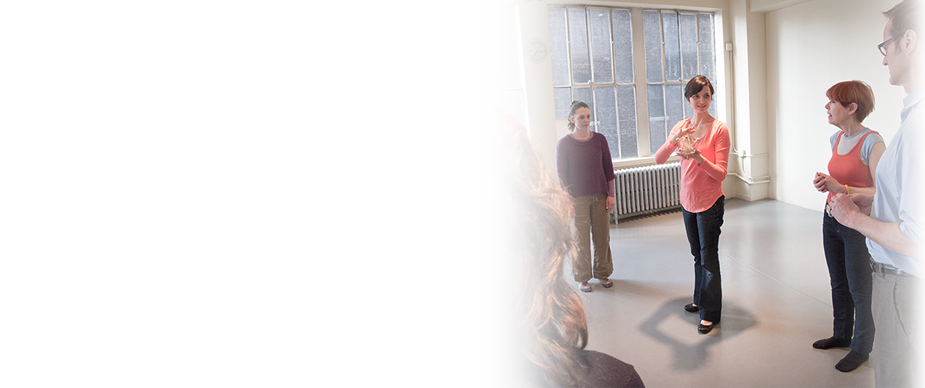Posture and Communication Across Cultures
/Hello from Japan!
I've been here teaching classes for the past week and a half with another week or so to go. Teaching in another culture is a refreshing way to keep me on my toes, or keep my feet on the ground, as I'd prefer to put it!
I've been writing and teaching a lot about posture and communication lately and this week I'll be teaching a workshop on posture, movement and communication in Tokyo. Communication is the main topic for that workshop, but it's ended up becoming a topic for every class I've taught here so far. It's important in teaching in general, but it feels more heightened here. Here are a few examples.
here I’m Guiding movement and posture during the passing along of a business card.
Cultural Differences...Keeping my classes culturally relevant opens up an active dialogue and has been quite fun. For example, in the US I often work with people on how to move and use their bodies when they shake hands. Here I worked on handing someone a business card, which is done with two hands while bowing. There's a lot we could learn about posture and movement and how we come across to another person from this gesture.
Here I am with Isuzu, one of the translators here. Thank you for translating Isuzu and for teaching me some Japanese! Arigato Gozaimasu!
Working with a translator...I've taught classes with translation going on once before, so I felt more prepared this time. Prepared for what? Prepared to wait. I can't rush. I have to divide up my sentences to give the translator time to translate. I have to simplify what I'm saying and avoid using too many idiomatic expressions that might get lost in translation. Once my words have been translated, I look around the room at the expressions of my students to see if the are nodding, look puzzled, or if they've begun what I've asked them to do. When I'm listening to the students, I'm staying connected with them, but I'm also listening to the translator.
While keeping my awareness all of these things, I am aware of the feeling of my feet on the ground. I'm aware of how where my head is, my hands, and how I'm moving and breathing. Not aware in a way that's distracting, but in a way that helps keep me centered.
The awareness is in the background and is connected to my awareness to everything going on around me. Often when people are involved in conversations, they are aware of the person or people in front of them and not much else. Having to be aware of what the person behind me (the translator) is saying while I'm listen to the person in front of me helps me stay centered, tall, and relaxed. The circumstances help me to better embody what I'm teaching about posture and communication.
Kinesthetic experience speaks 1000 words...
The classes I'm giving here are to Alexander Technique teachers and teachers in training. One of the main reasons that the Alexander Technique is so effective is because Alexander Technique teachers have been highly trained to use their hands to help their clients have a kinesthetic experience of changing their posture and how they move.
This is a very important aspect of how I work and how the technique is so effective for improving posture. Often when people receive verbal or written instructions, their habits get in the way of them following the instructions correctly. Part of what I'm working on with the trainees and teachers here are hands-on skills. Occasionally when the translator hasn't been immediately available, I've been able to convey what I need to convey just by guiding and demonstrating with my hands. It's a great reminder of just how unique the Alexander Technique is.




